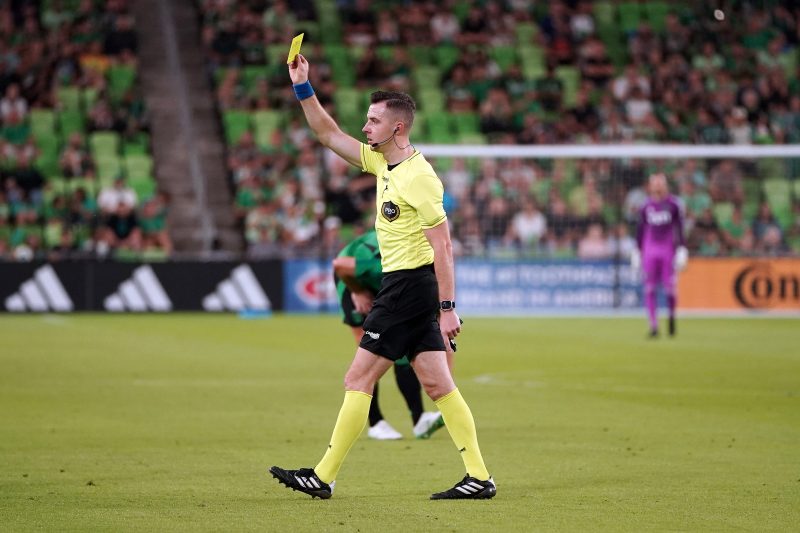
MIAMI – One unique way the FIFA Club World Cup will appeal to fans this summer is the introduction of the referee camera, which will provide viewers with point-of-view action they’ve never seen before watching soccer games.
FIFA referees will wear tiny cameras on the sides of their heads, connected to a microphone and transmitter that will send the video to DAZN – the company broadcasting all 63 Club World Cup matches for free on its app and website.
The video will also be shown inside six NFL stadiums during Club World Cup games so fans can experience the referee’s decision-making process and enhance transparency during on-field reviews.
Sports fans are typically accustomed to seeing cameras zoom in on referees making announcements during NFL and NBA games, while MLB fans have recently experienced the home-plate umpire’s point of view from cameras on their facemask.
If it goes well, maybe referee cameras could infiltrate the viewing experience in other sports.
“The main purpose is to offer the TV viewers a new experience,’ FIFA Referees Committee chairman Pierluigi Collina told USA TODAY Sports this week during a Club World Cup referee training session in Miami.
Referees will place customized molded earpieces into their right ears, then watch a screen as they adjust and tighten their cameras to the ideal angle for capturing the action.
Two wires – one for the camera and the other for a microphone – will be clipped on the back collar either on the referee’s uniform or an undershirt. And the transmitter, called a ballpack, will be placed in their shorts’ pocket.
FIFA tested several cameras, including some at chest level, but felt the side of the ear resulted in the best perspective. It offers a direct line of sight of the referees, especially when they turn their heads – something that wouldn’t be offered if they wore a body camera on their chest.
“We were thinking about what’s the best way to attach the camera,” said German referee Nicolas Winter, whose idea has come to life for the Club World Cup and could be employed by FIFA for other matches in the future. “For us, it was important to have the original point of view of the referee because when you have a body cam and move your head to the right or left, you never really have the original point of view.”
Added FIFA Director of Innovation Johannes Holzmuller: ‘If we replicate the referee view, it should really be 100% what the referee is looking at.”
FIFA announced its referee cameras late last week, sharing a video of Pachuca’s Oussama Idrissi dribbling around several defenders to score a goal in their win against Botafogo in a FIFA Intercontinental Cup match last December.
The referee’s camera captured the player receiving a pass from his teammate in the penalty area, the player’s creative playmaking before firing the shot, the roar of the crowd and defenders helplessly looking up at the referee after the score.
“The view from the referee’s camera was amazing,” Collina said. “It’s interesting.”
Holzmuller says the video transmitted will be in 1080i quality, sent over a private 5G network so DAZN and the stadiums can use the video.
Referees have worn the devices during their training sessions to get used to their ear molds, which aim to make the wearing experience more comfortable for them.
The referees will also have assistance putting on their camera devices before matches to ensure they are recording as soon as matches begin.
“From there, it goes live on air,” Holzmuller said.
FIFA will use the findings from the Club World Cup to create guidelines and explore the use of them in future matches. It’s possible it could be a mainstay for soccer broadcasts – including next year’s FIFA World Cup.
Along with improving the fan experience, the referee cameras could also help them improve their craft.
“I was sitting at home on my couch seven years ago, thinking about how to improve refereeing,” Winter said.
“We have 30+ camera angles in a top match, but we can never see our own perspective after a match again. It’s really helpful for us to analyze matches – like our positioning, for example. But I think it’s good to give the audience and spectators a more transparent view, so they can understand what it means to be a referee.
“Of course, we are all human. We all make mistakes. But I think it’s always good to show everyone the way decision making works.”
